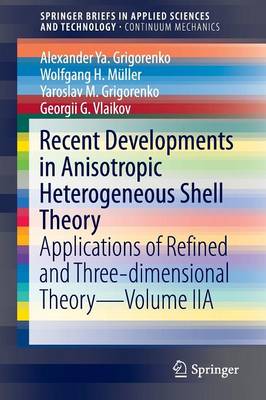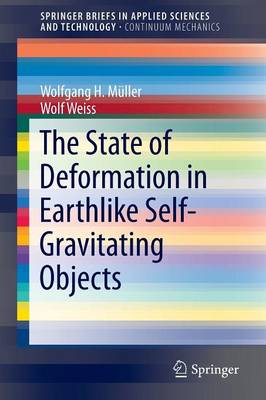SpringerBriefs in Continuum Mechanics
2 total works
Recent Developments in Anisotropic Heterogeneous Shell Theory
by Alexander Ya. Grigorenko, Wolfgang H. Muller, Yaroslav M. Grigorenko, and Georgii G. Vlaikov
This brief book presents solutions of stress-strain problems for a wide class of anisotropic inhomogeneous shells obtained by the refined model. Studying these problems results in severe computational difficulties due to partial differential equations with variable coefficients resulting from the constitutive relations of the original model. To solve this problem the book uses spline-collocation and discrete-orthogonalization methods. It analyses the influence of geometrical and mechanical parameters, of various kinds of boundary conditions, and of the loading conditions on the distributions of stress and displacement fields in shallow, spherical, conical, and noncircular cylindrical shells. The dependence of the stress-strain pattern on shell thickness variations is studied. The authors solve the problem also for the case of the thickness varying in two directions. They study how a variation in shell thickness influences the stress-strain state and consider noncircular cylindrical shells with elliptical and corrugated sections are considered. The results obtained during numerous calculations support the efficiency of the discrete-orthogonalization approach proposed in the monograph for solving static problems for anisotropic inhomogeneous shells when using the refined model.
The State of Deformation in Earthlike Self-Gravitating Objects
by Wolfgang H. Muller and Wolf Weiss
This book presents an in-depth continuum mechanics analysis of the deformation due to self-gravitation in terrestrial objects, such as the inner planets, rocky moons and asteroids. Following a brief history of the problem, modern continuum mechanics tools are presented in order to derive the underlying field equations, both for solid and fluid material models. Various numerical solution techniques are discussed, such as Runge-Kutta integration, series expansion, finite differences, and (adaptive) FE analysis. Analytical solutions for selected special cases, which are worked out in detail, are also included. All of these methods are then applied to the problem, quantitative results are compared, and the pros and cons of the analytical solutions and of all the numerical methods are discussed. The book culminates in a multi-layer model for planet Earth according to the PREM Model (Preliminary Earth Model) and in a viscoelastic analysis of the deformation problem, all from the viewpointof rational continuum theory and numerical analysis.

